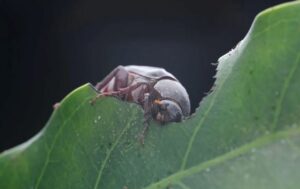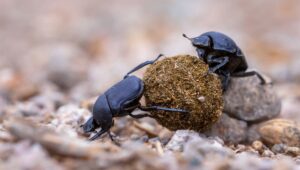Despite their small size, beetles play an essential role in ecosystems. Their great diversity and adaptability make them one of the most important groups of insects on the planet, although many people confuse them with pests. With around 400,000 described species, these coleopterans lead the ranking of the most numerous insects, surpassing butterflies and bees.
Beetles are found in almost all ecosystems, from lush forests to arid deserts and even urban environments. Their adaptability allows them to inhabit extreme conditions and perform vital functions for nature.
Depending on the region, these insects are known by different names. In Latin America, for example, they are called weevils, beetles (Colombia), caculos (Puerto Rico), or bubutes (Venezuela). In addition, some specific species have particular names, such as ladybugs, stag beetles, or oil beetles.
Characteristics and Defense Mechanisms
The size of beetles varies greatly: some species measure only a few millimeters, while others exceed 10 centimeters. Their bodies are covered by a hard and resistant exoskeleton that protects them from predators and the environment.
Furthermore, they have developed ingenious defense mechanisms. Some species, like bombardier beetles, expel foul-smelling chemicals and can even launch a hot liquid mixture to deter their attackers. Others have such a tough shell that it is practically impenetrable for many predators.

Ecological Importance
The diet of beetles is very varied. Some are herbivores and feed on plants or wood, while others are carnivores and consume small insects or animal remains in decomposition.
Their role in the ecosystem is fundamental: many species contribute to the decomposition of organic matter, enriching the soil and promoting the growth of new plants. Other beetles act as pollinators or natural pest regulators by feeding on insects that can damage crops.
Far from being just common insects, beetles are key players in environmental balance. Their diversity and functions make them indispensable allies of nature and true protagonists in the world of insects.

Some Beetle Peculiarities
Beetles have characteristics that set them apart from other insects:
- Wings: Their front wings are hard and horny, while the hind wings are membranous. Additionally, the front wings cover the hind wings.
- Antennae: They have antennae with nine joints ending in a mass, and the tip of the antennae can open like a fan. It also helps them detect odors with their antennae.
- Body: They have a short and compact body, with a very hard cuticle, and a rhombic and toothed head in front.
- Behavior: They search for dung to feed on and make balls, inside of which they lay their eggs. They also dig the earth and sand beneath the ball until it is underground or support the ball with their head forward and roll it by walking backward.
- Metamorphosis: They undergo complete metamorphosis with egg, larva, pupa, and adult stages.
- Ecological Importance: Dung beetles have great ecological importance as they decompose and recycle dung.
Have you visited our YouTube channel yet? Subscribe now!

